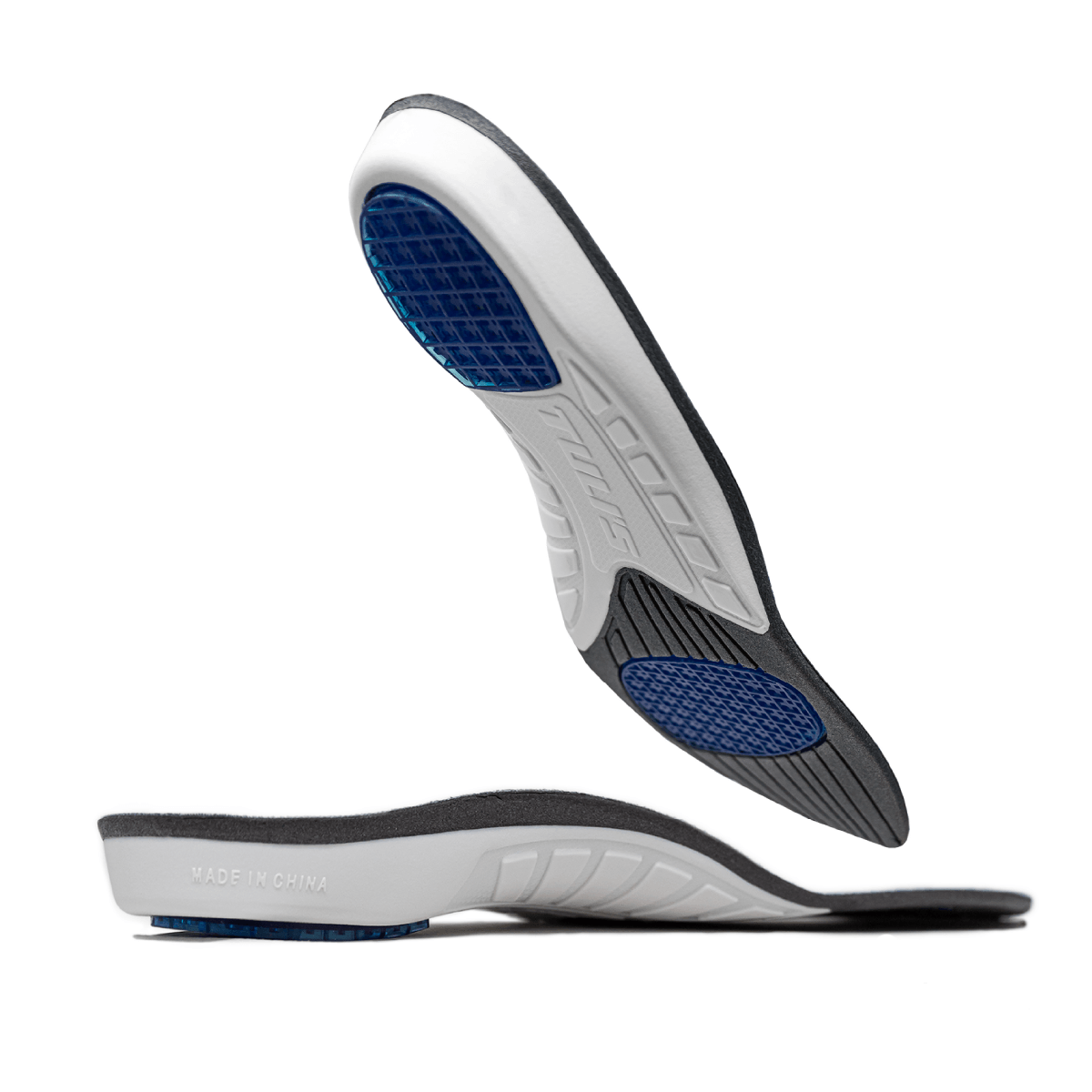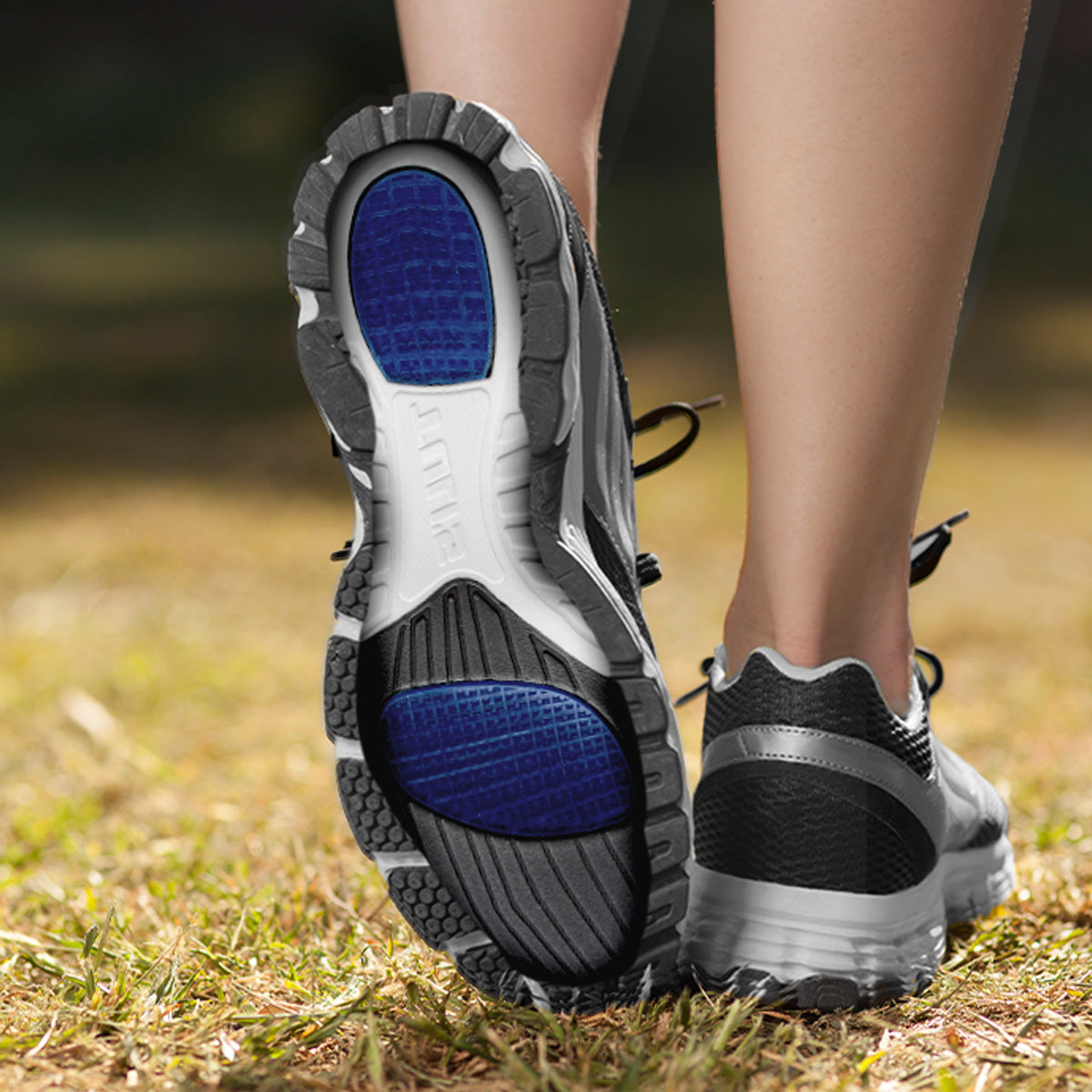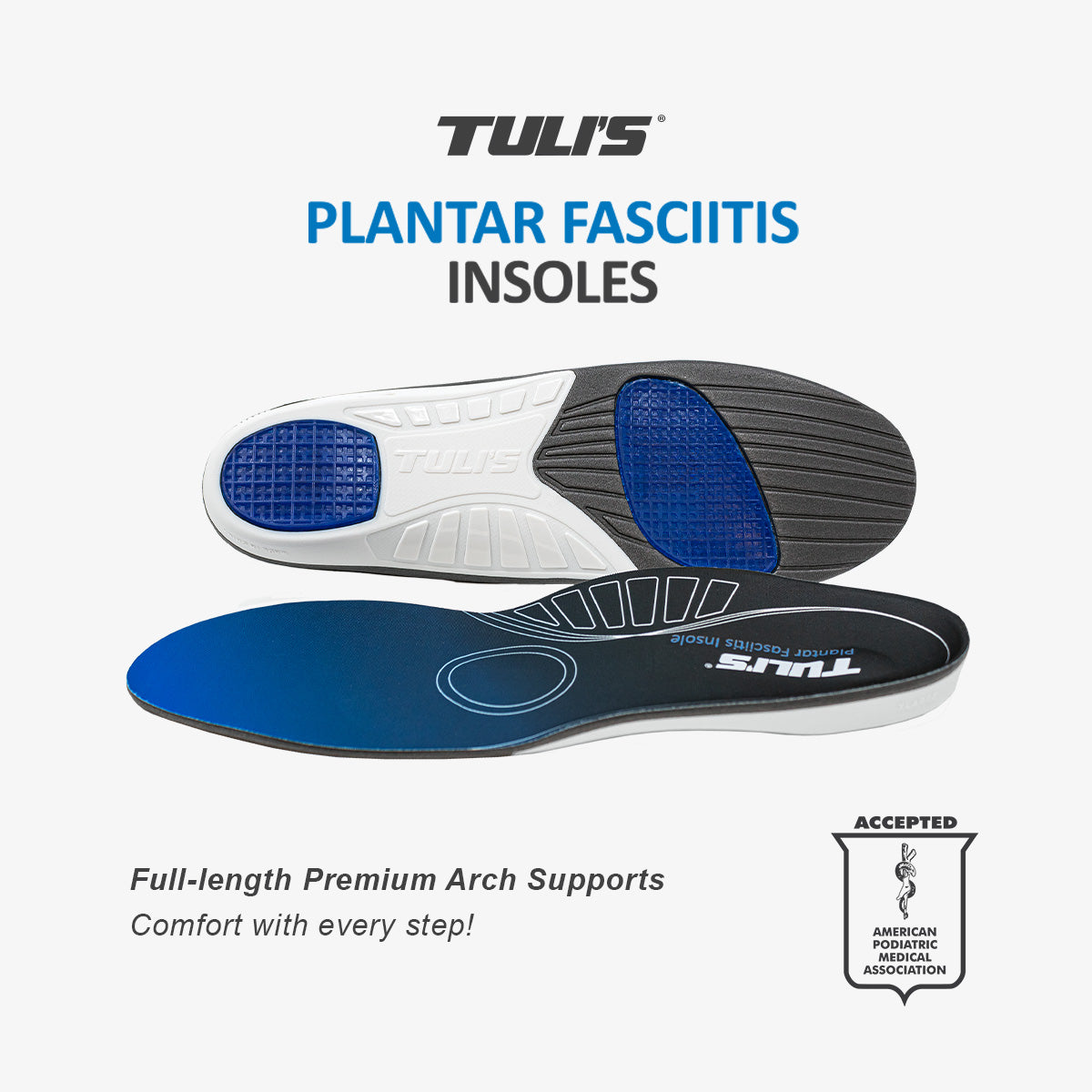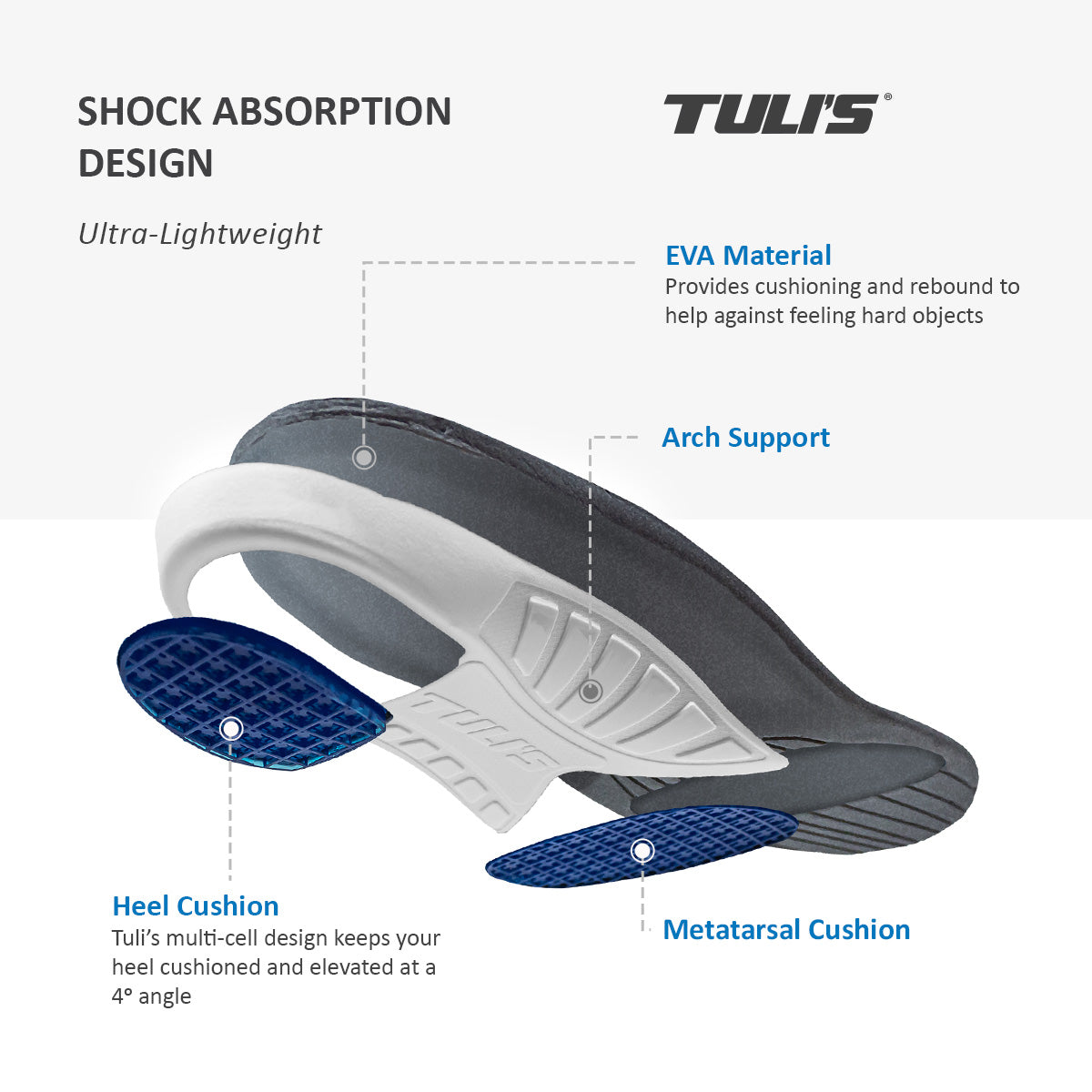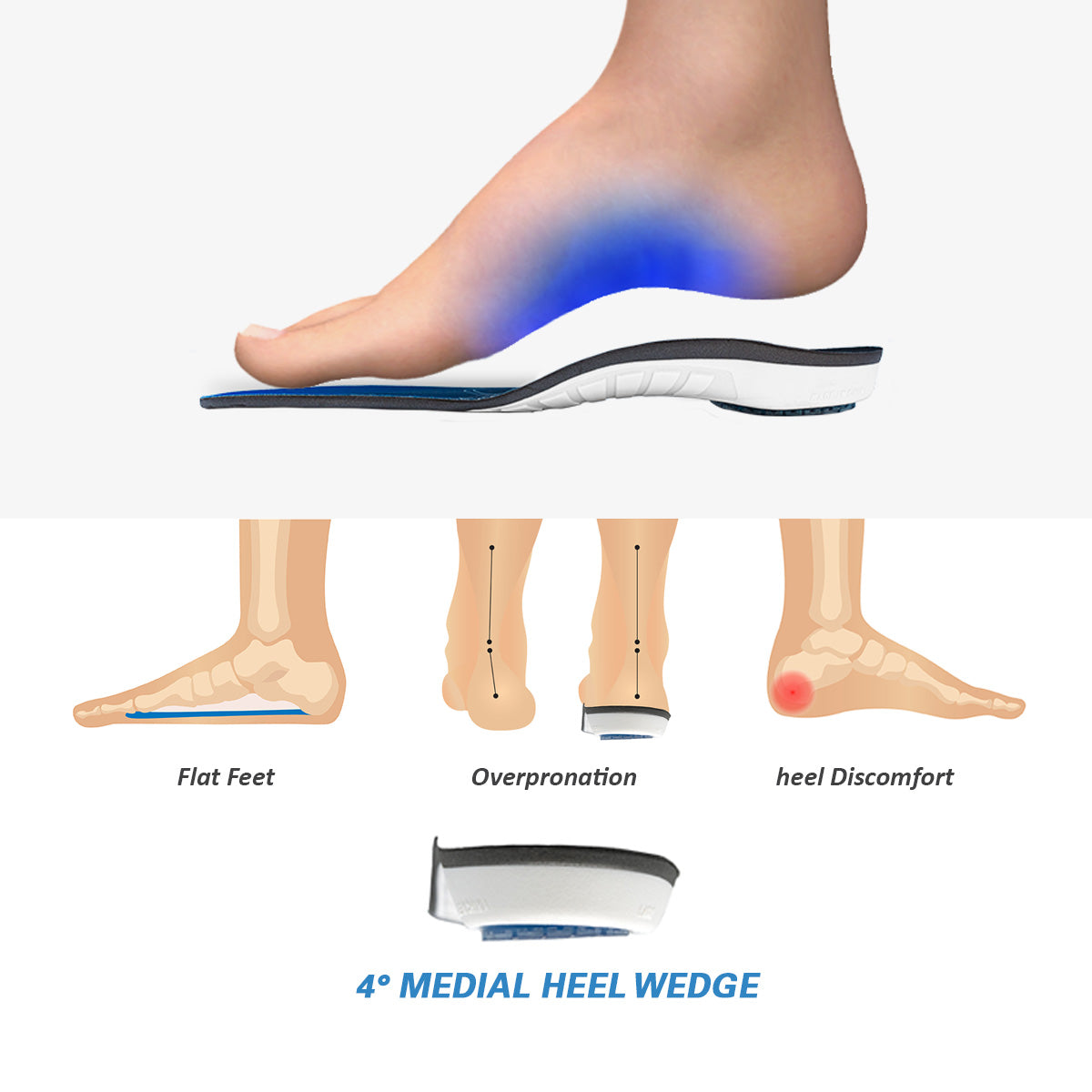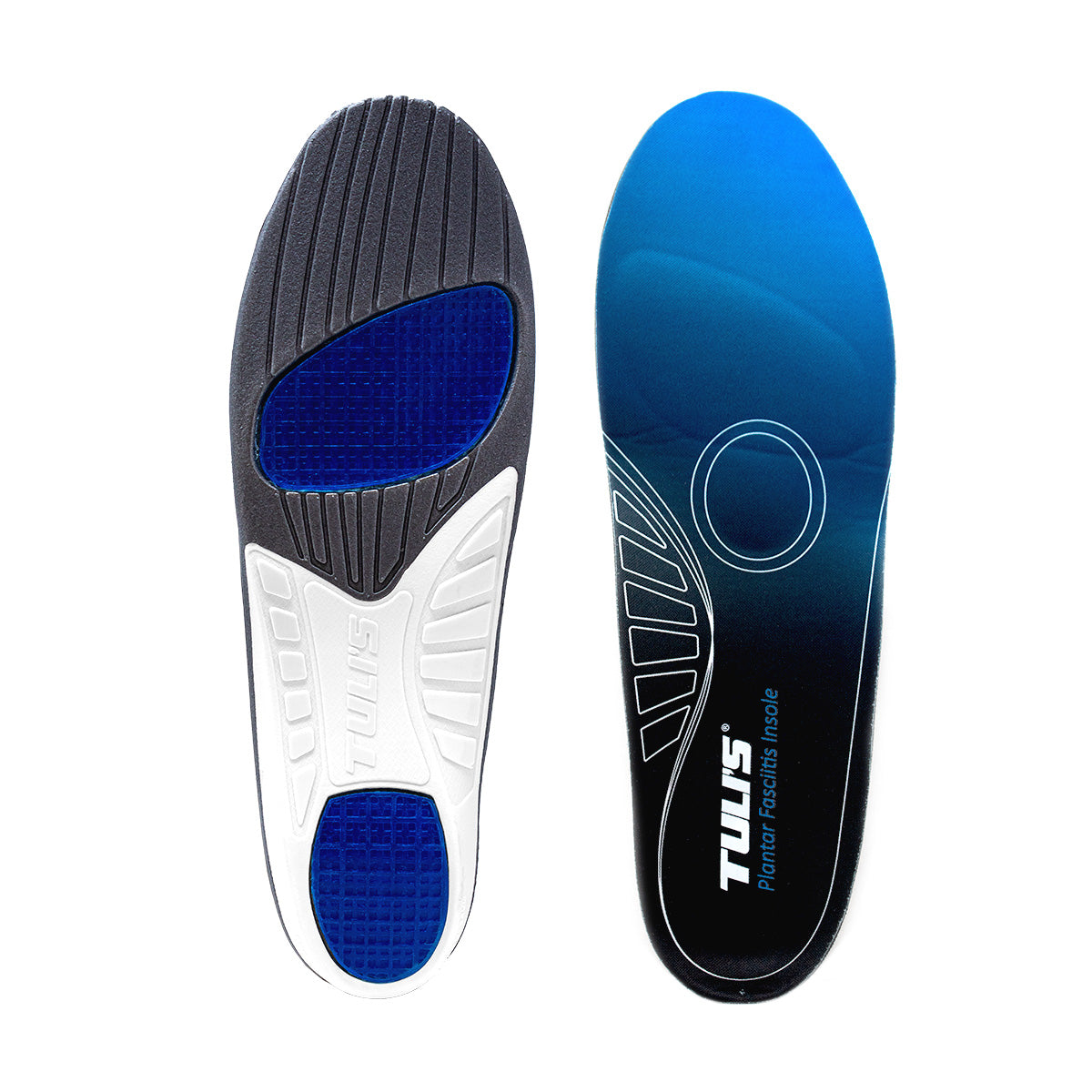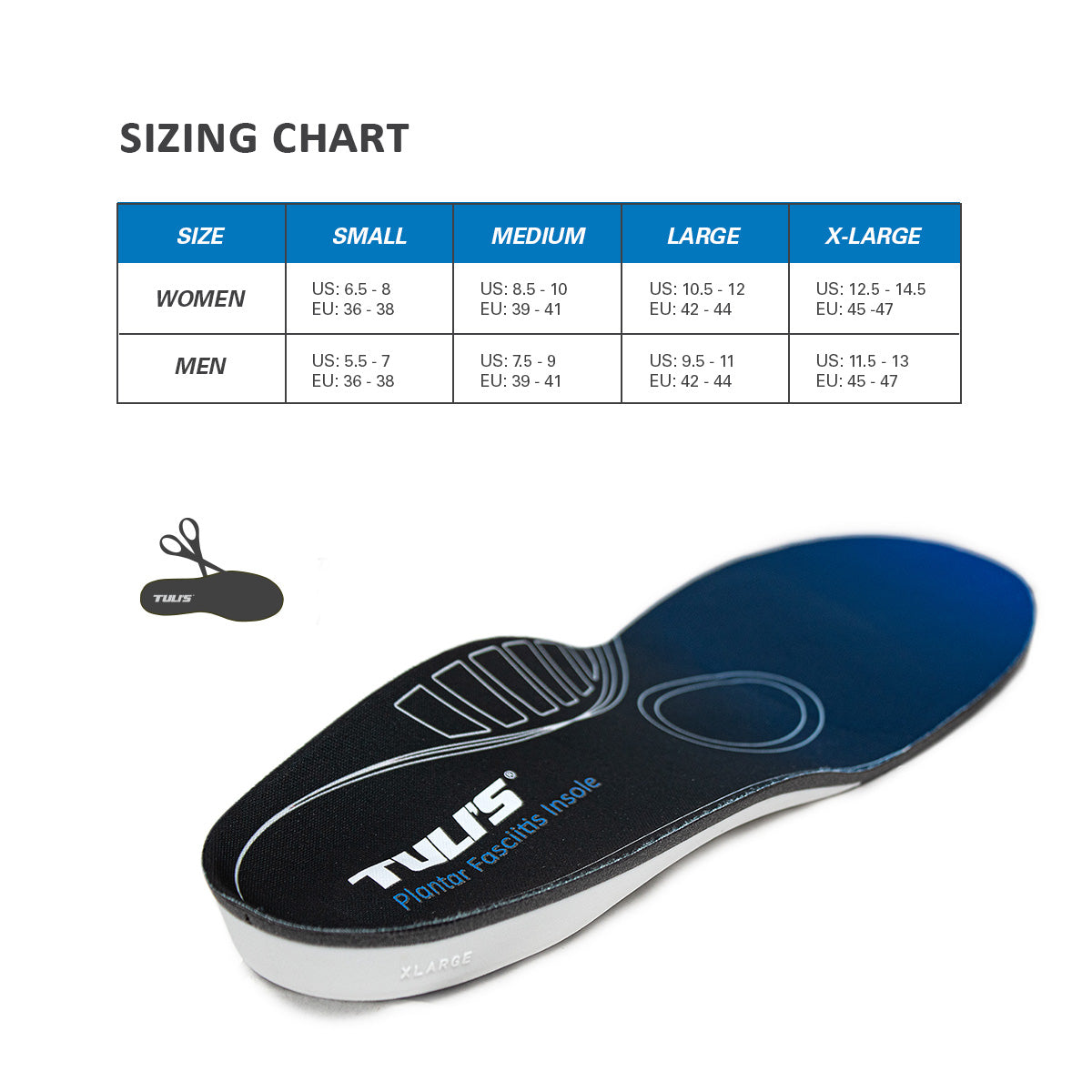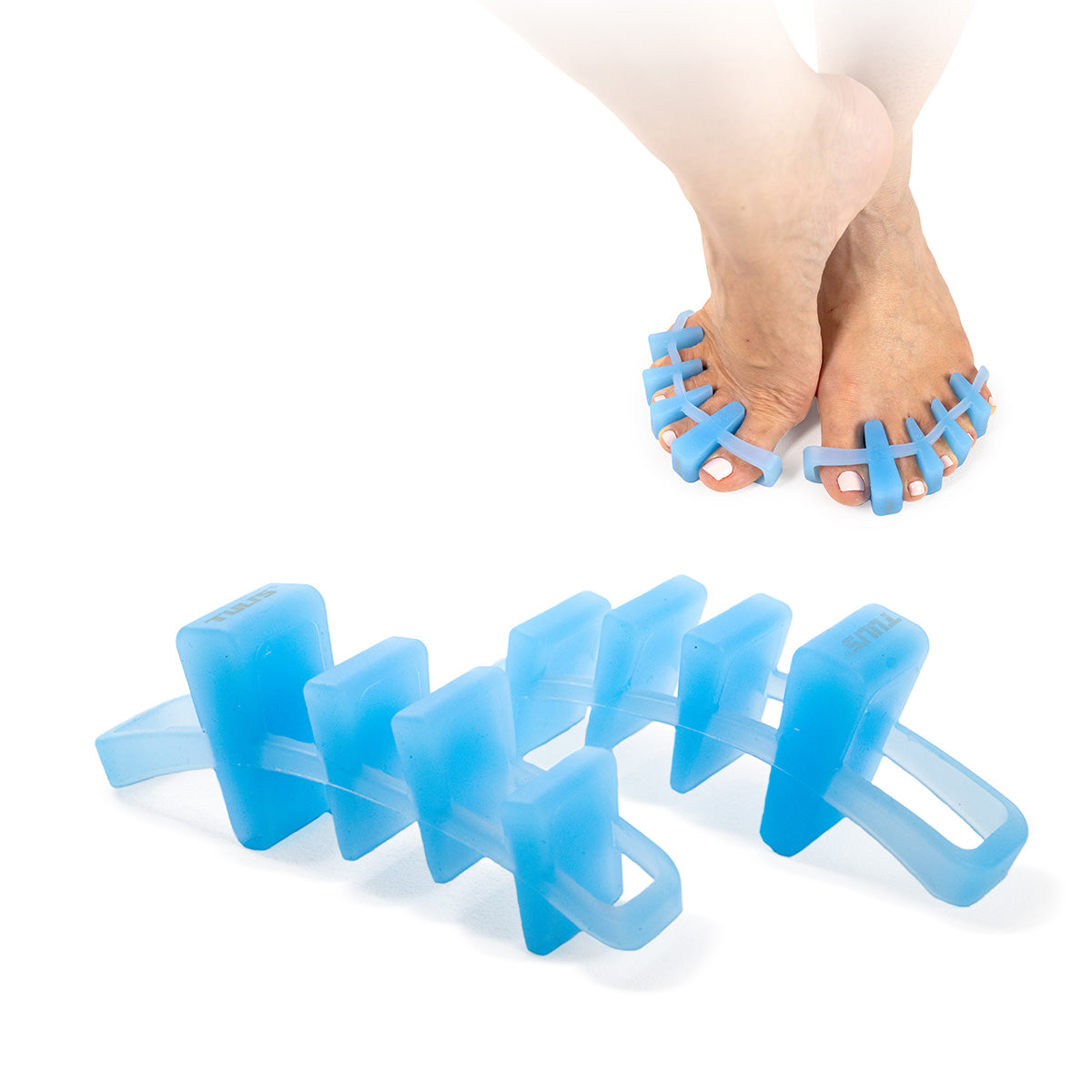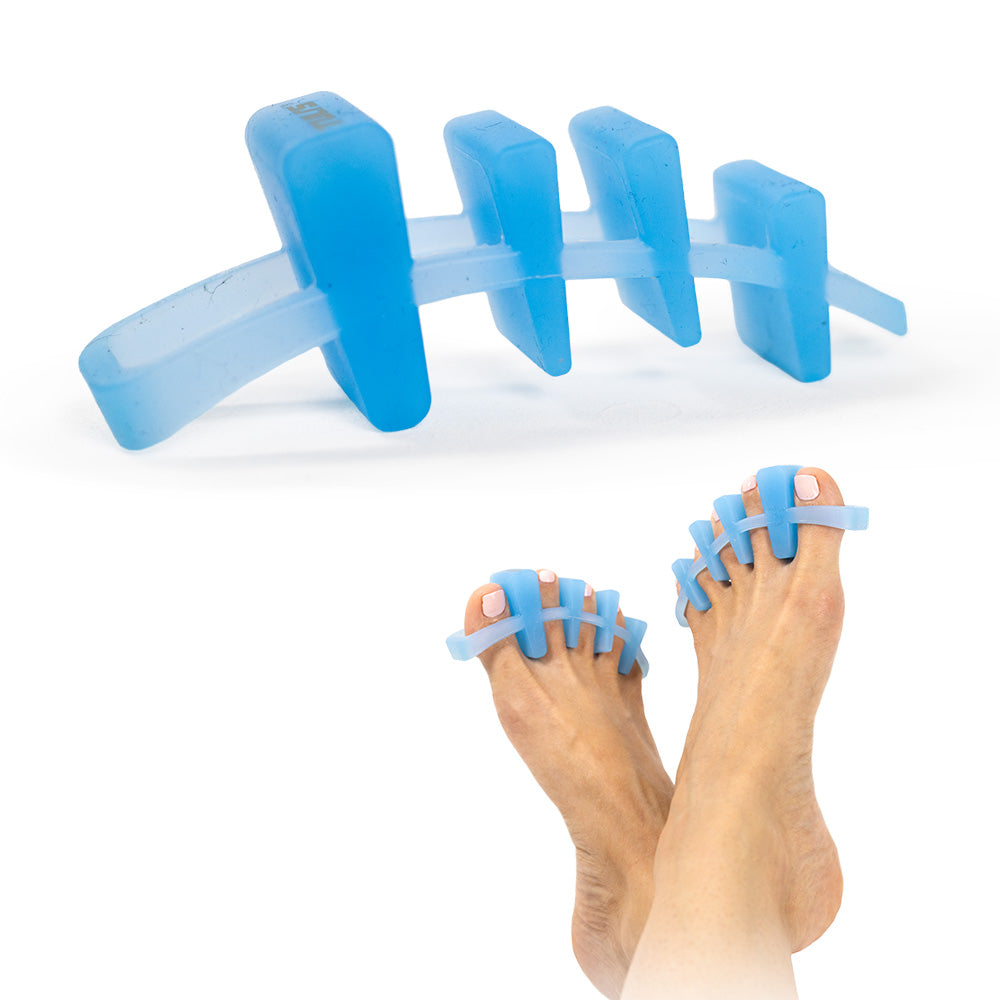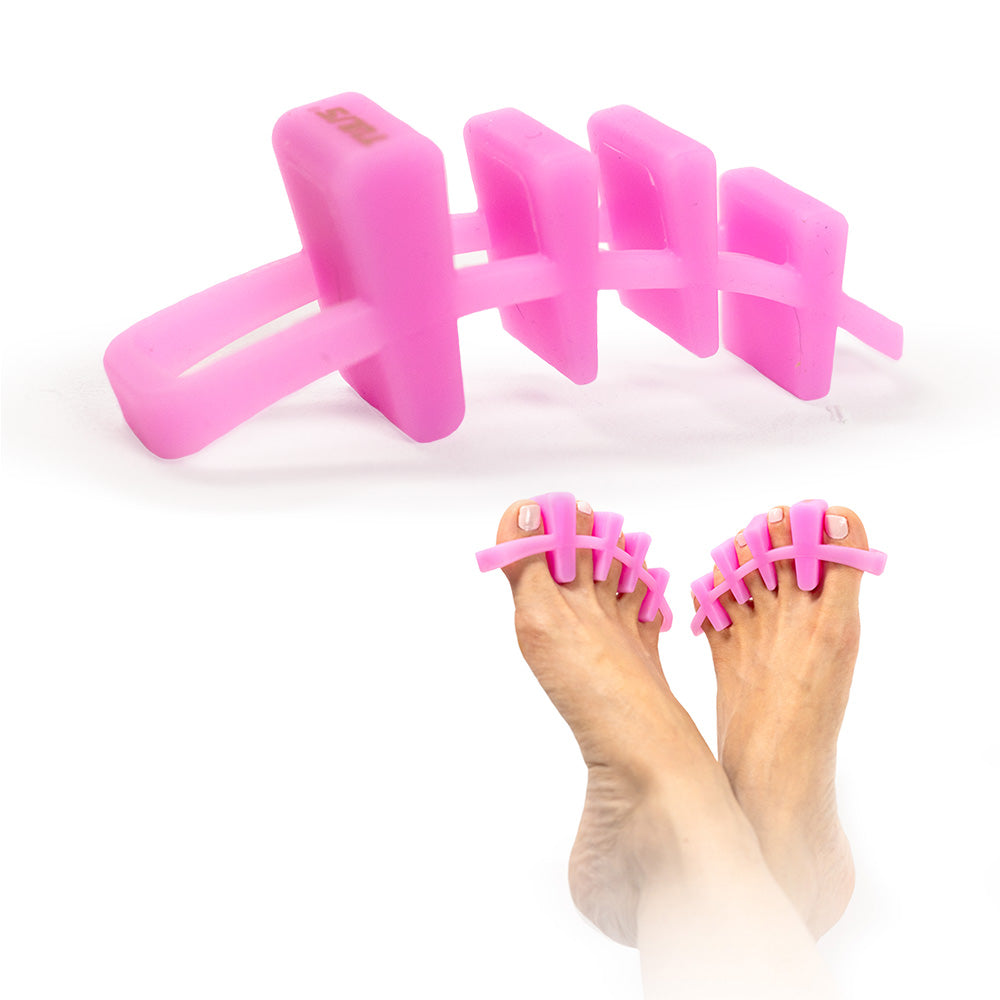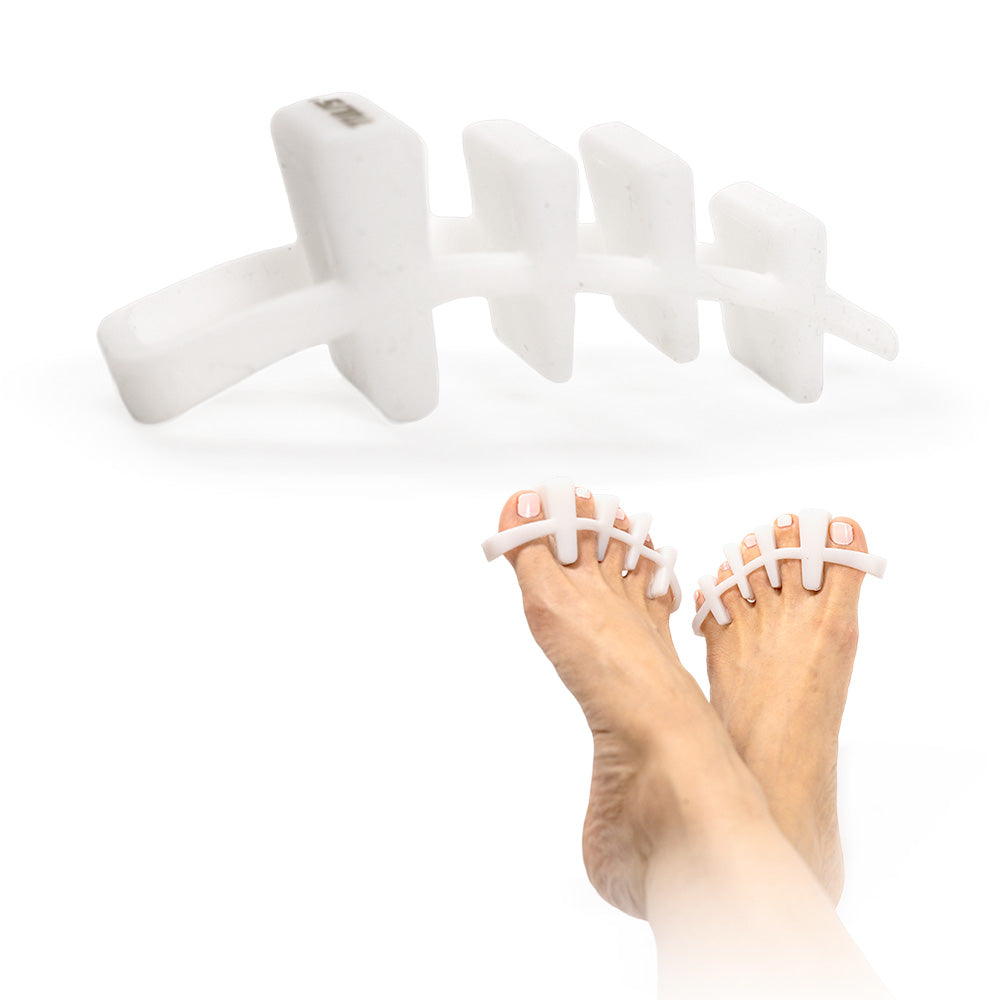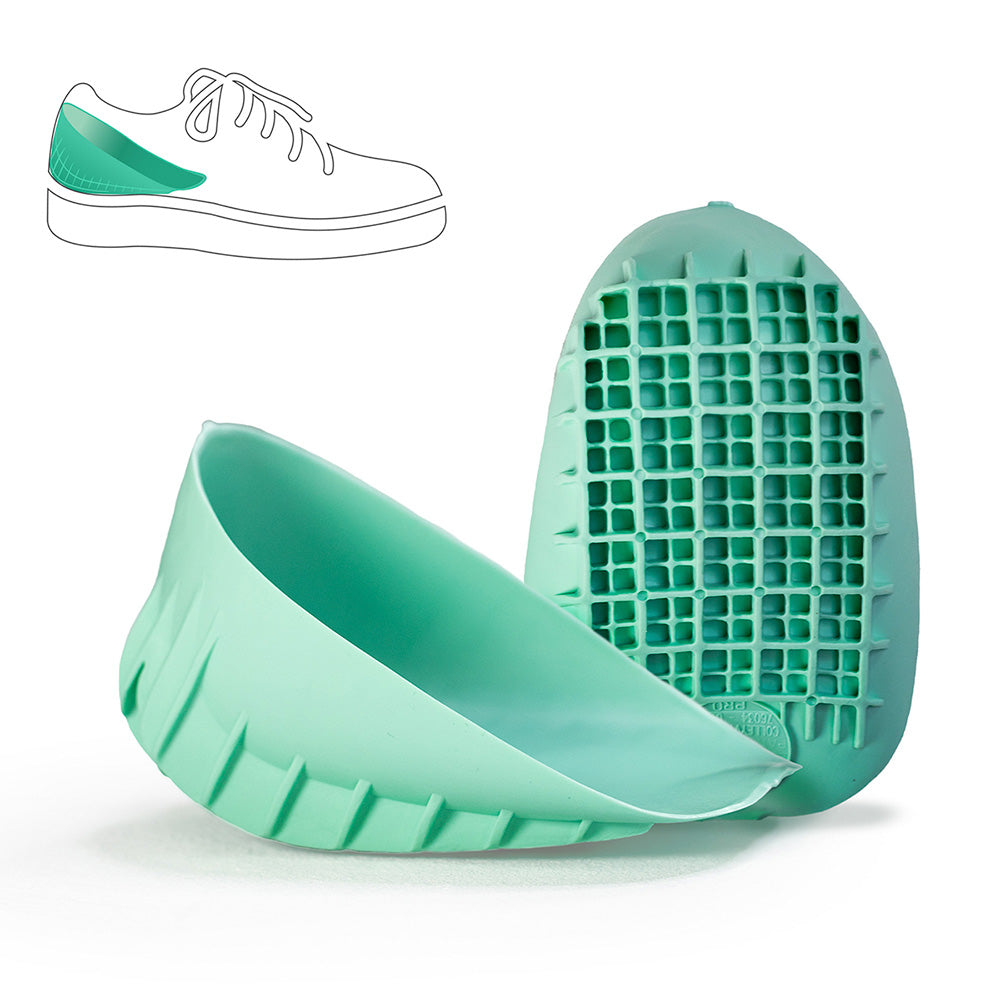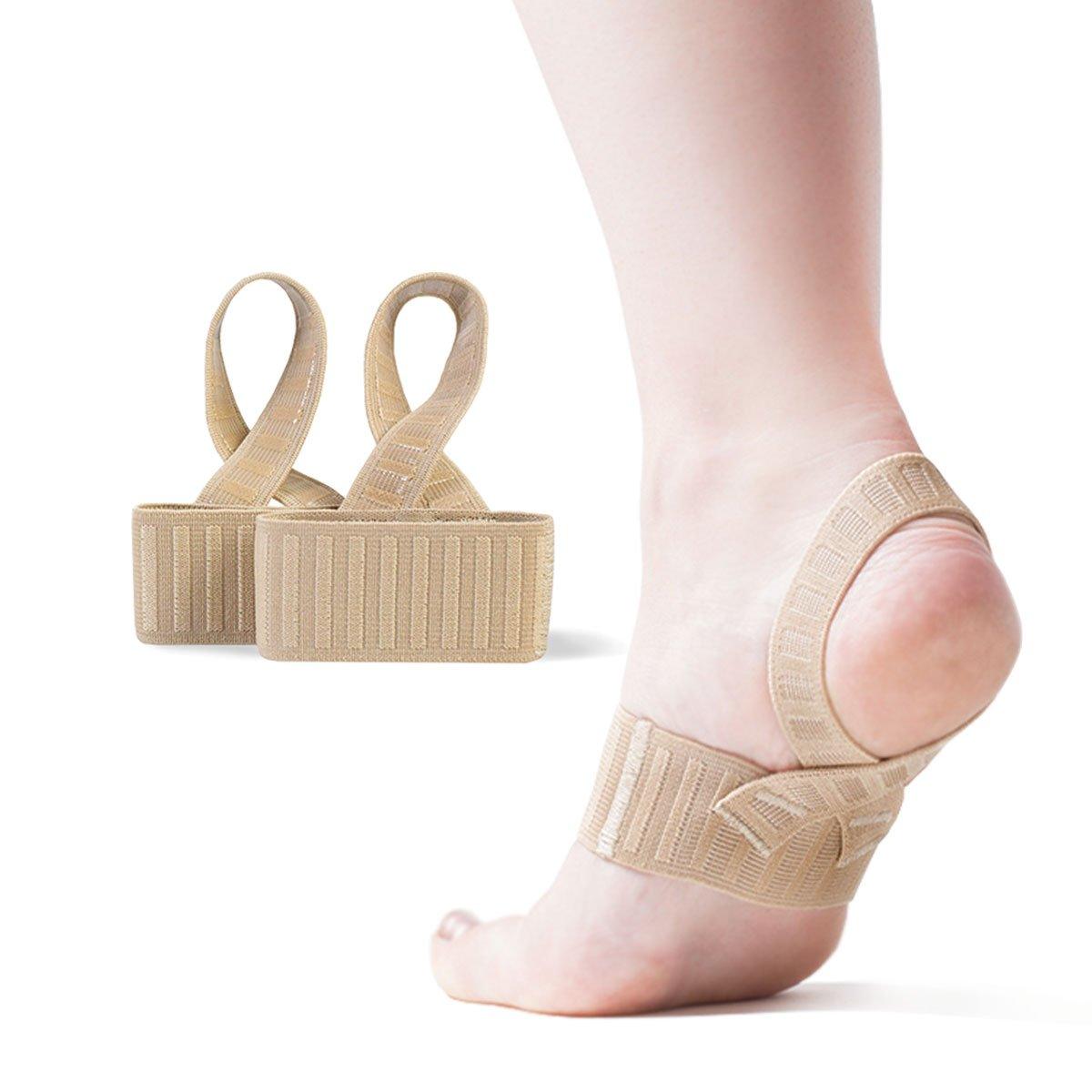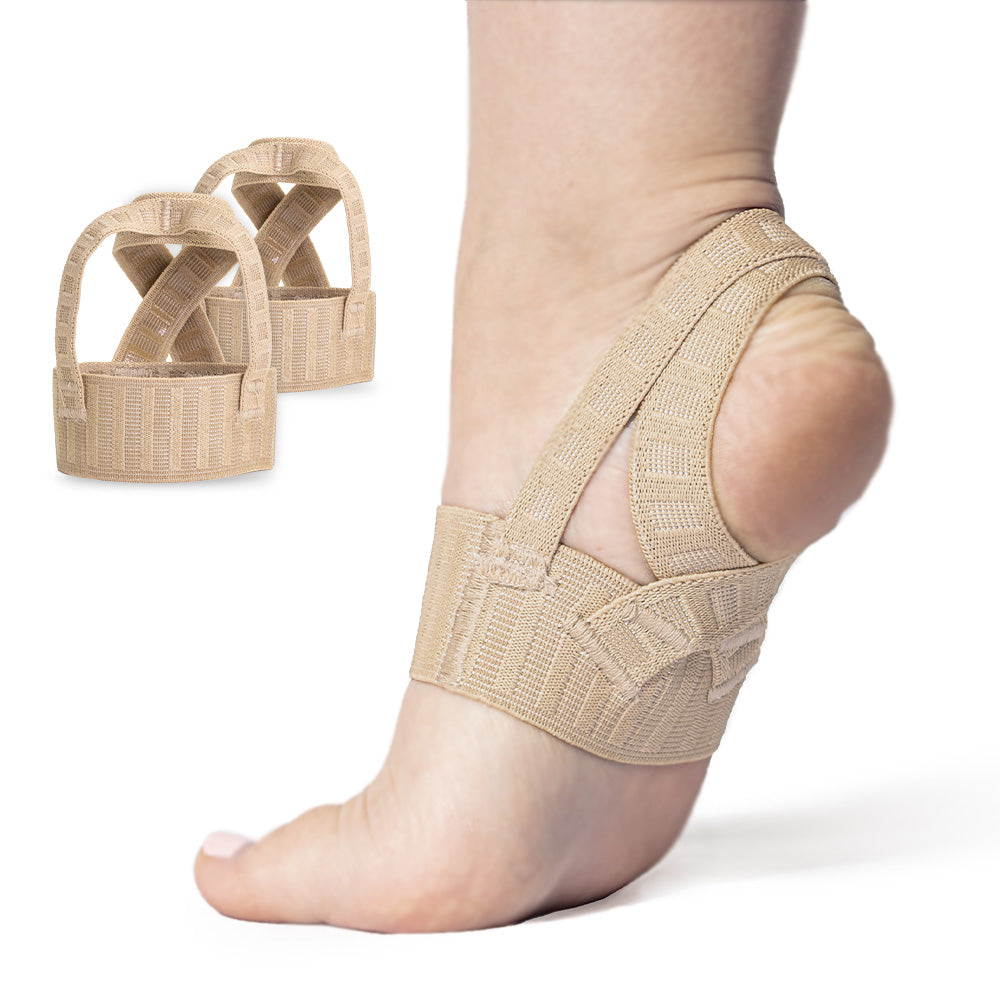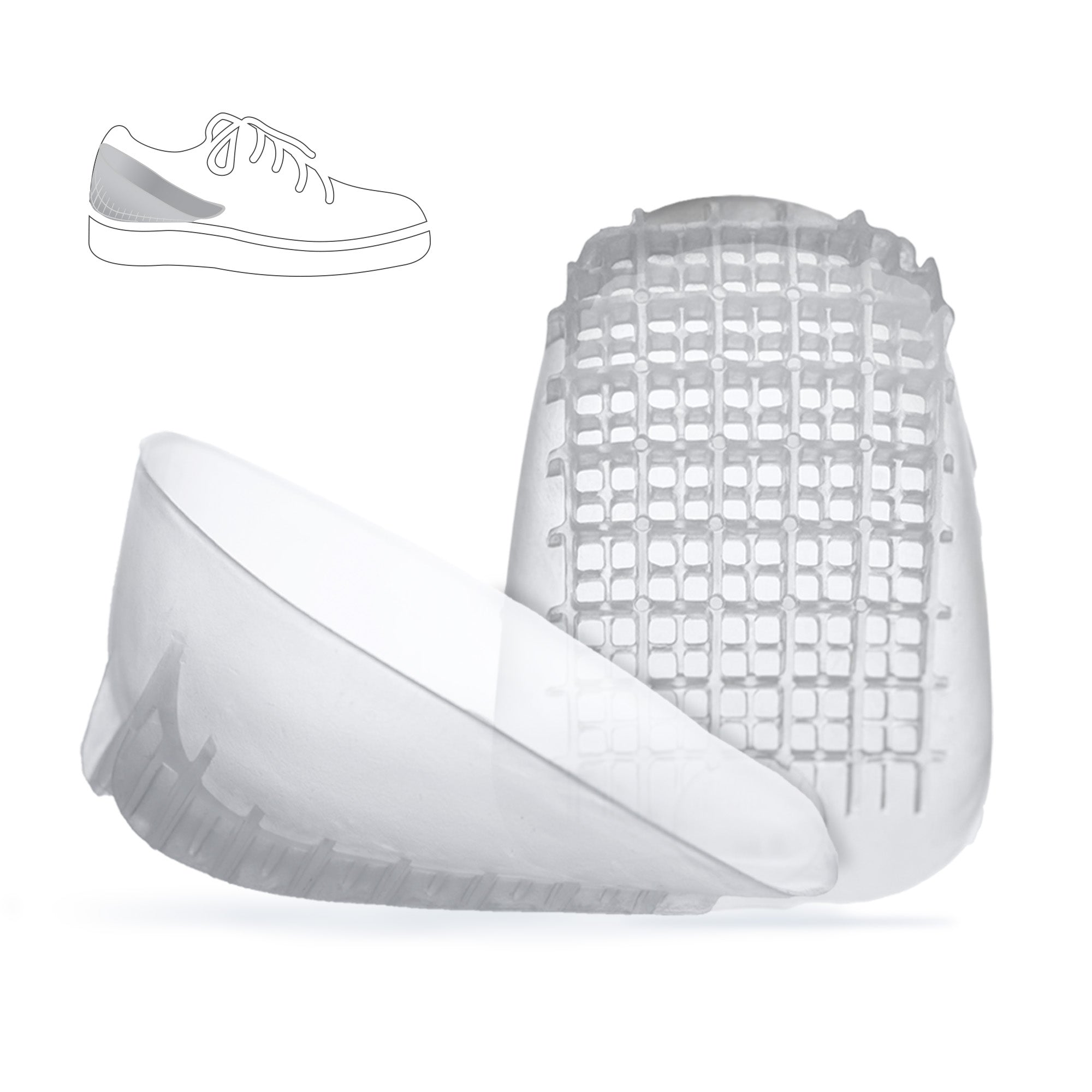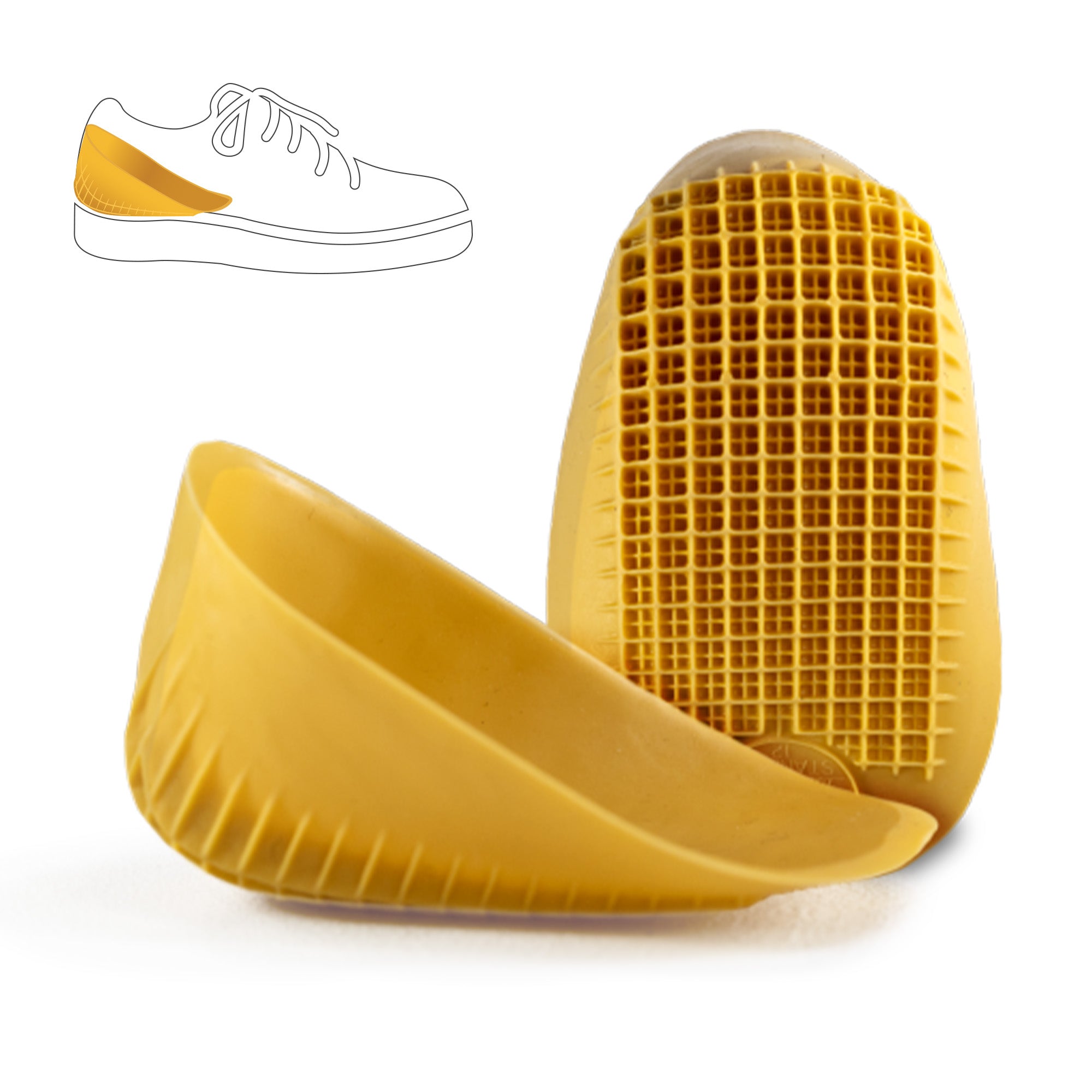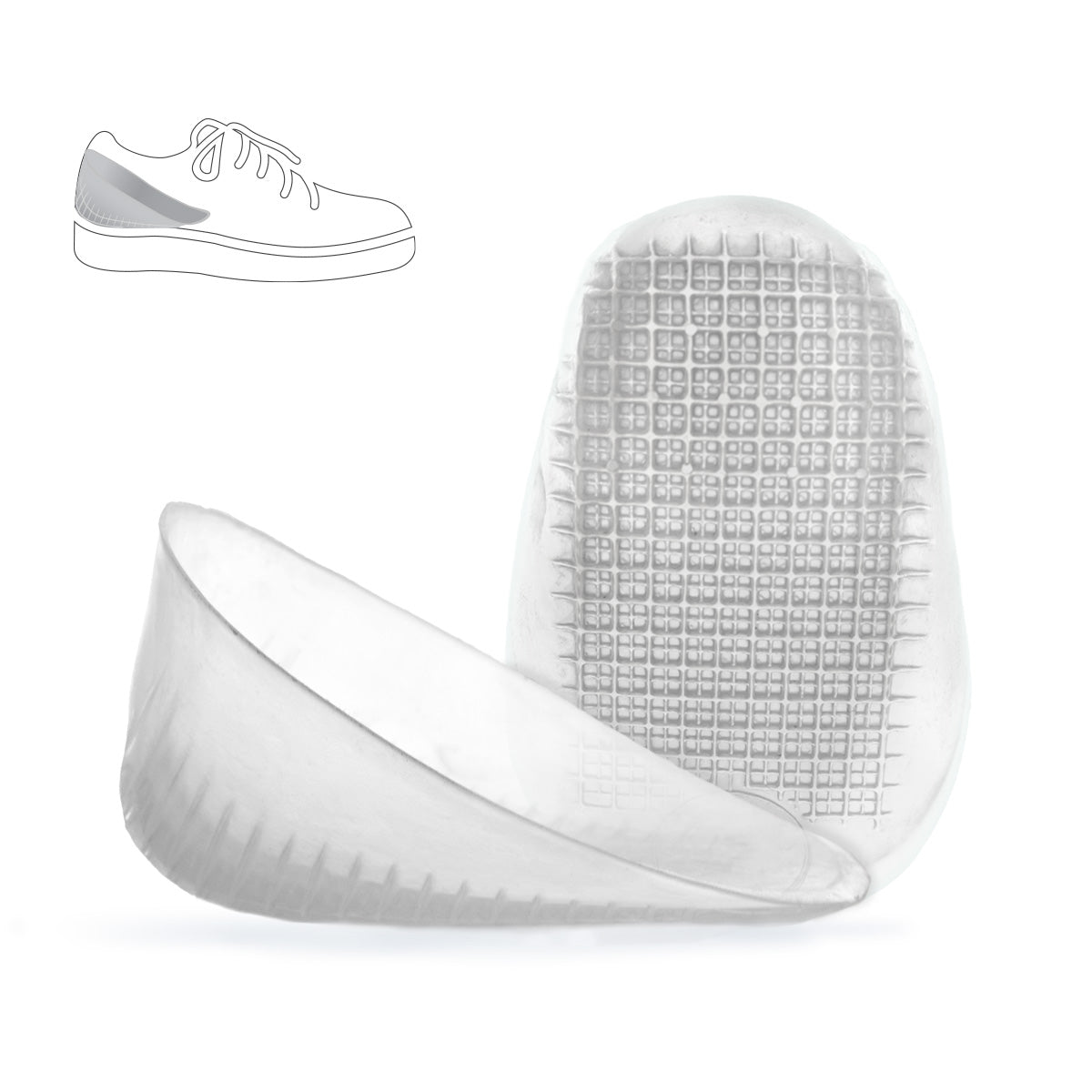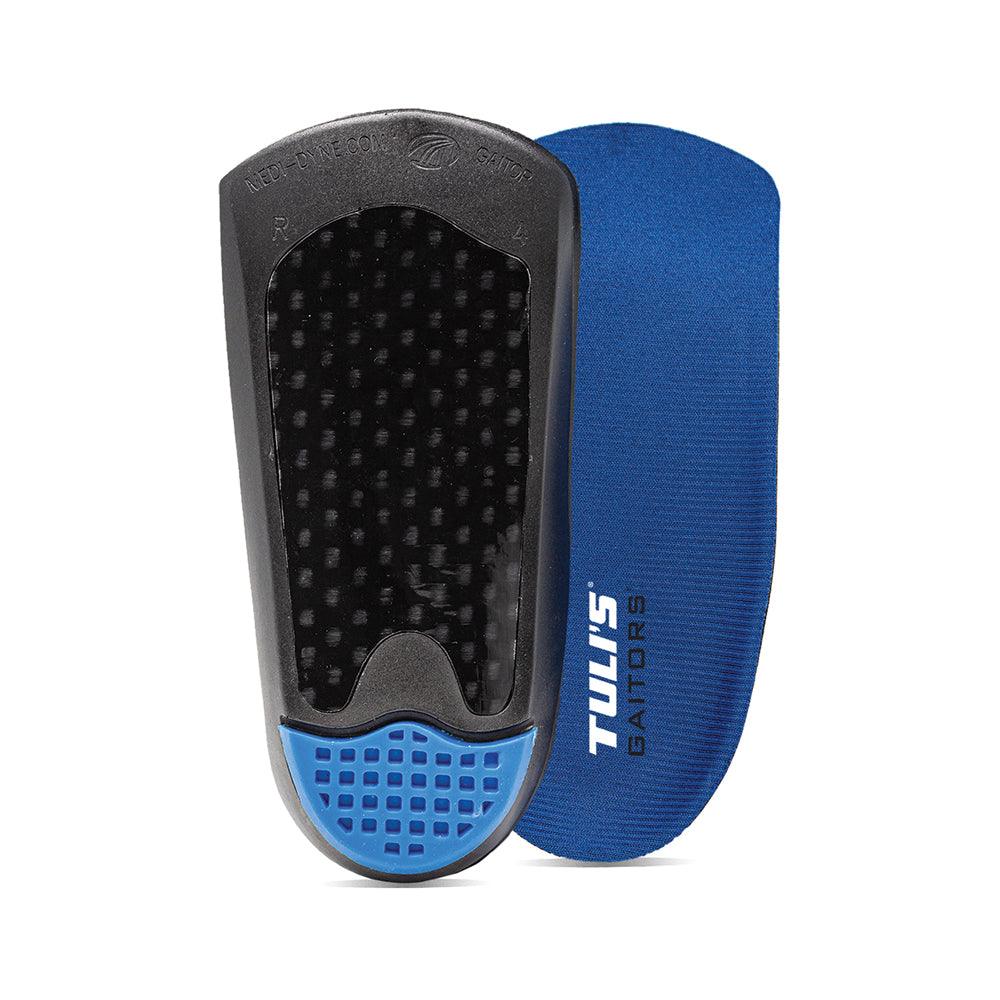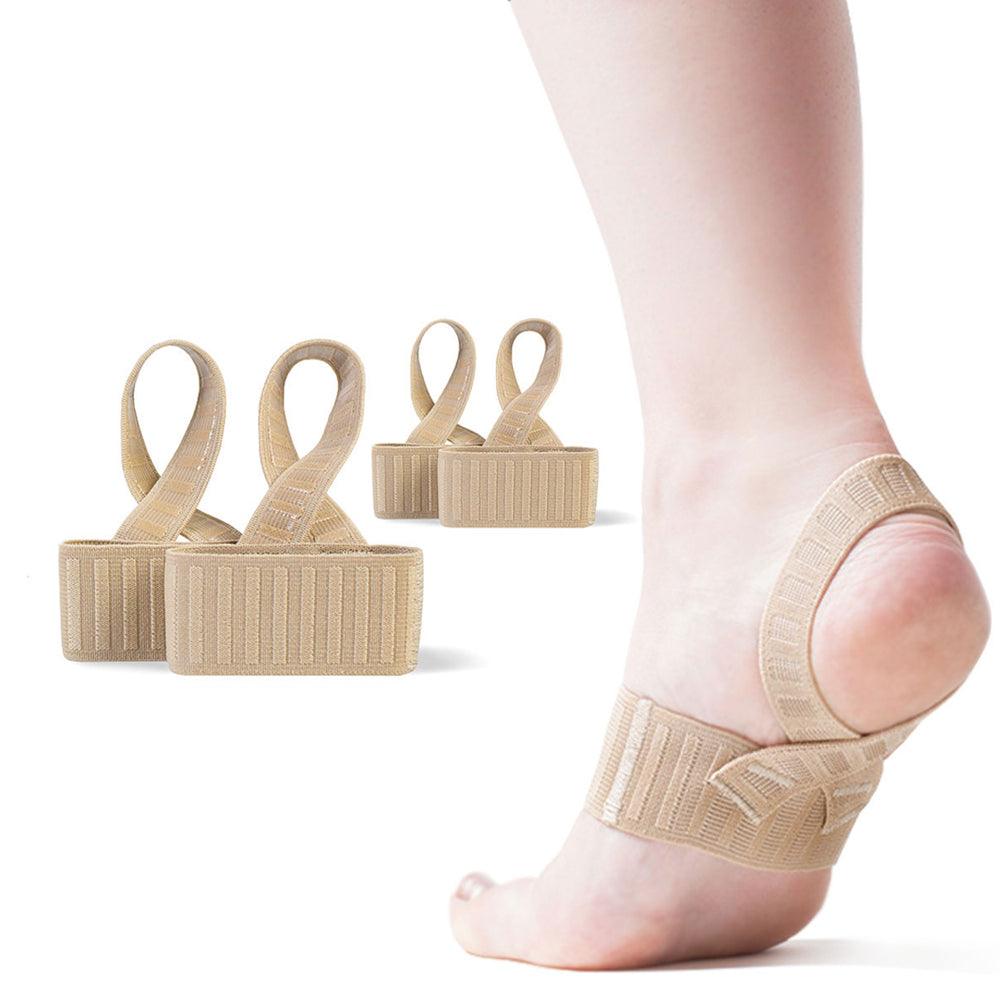Maintaining good flexibility throughout the interconnective chain of the lower leg (ankle, Achilles tendon, calf) is the best way to heal and prevent the recurrence of plantar fasciitis. Supportive measures like orthotic inserts, arch support insoles, or specialized footwear for plantar fasciitis can make your feet feel less painful and strained by ensuring that the pressure is evenly distributed across your foot.
Meanwhile, targeted plantar fasciitis exercises can help to strengthen the fascia, easing tension and promoting healing. We have put together a list of easy exercises to alleviate pain caused by plantar fasciitis, along with a selection of Medi-Dyne's top-selling support products that can aid in relieving plantar fasciitis.
A two-year study done by the American Orthopaedic Foot and Ankle Society (AOFAS) found that it was a combination of support provided by Tuli's® Heel Cups and targeted stretching exercises that provided the most significant relief from heel pain. During the study, researchers found that 88% of those who used the Tuli's® Heel Cups combined with tendon and plantar fascia stretches experienced relief from their symptoms.
Incorporating a daily exercise routine that consists of calf stretches, toe stretches, and plantar fasciitis exercises that focus on the arch of the foot can improve flexibility and mobility, ultimately reducing the symptoms of plantar fasciitis. With support and stretching exercises, individuals can effectively manage their condition and gradually regain comfort and functionality in their feet. However, consult with your healthcare professional for a treatment plan tailored to your individual needs and circumstances is essential.
Exercises for Plantar Fasciitis
Proper stretching and strengthening programs can correct functional risk factors such as tightness of the calves and weak Achilles tendons or foot muscles, providing immediate benefits and long-term healing. Ten minutes or more of stretching and strengthening exercises daily is one of the best ways to prevent heel pain.
Here are some exercises for plantar fasciitis you can do to reduce pain:
Calf Stretch:
- Stand and face the wall and stretch your hands on the wall at shoulder height.
- Place one foot forward and one back, keeping both heels on the ground.
- Bend your front knee while keeping your back knee straight, feeling the stretch in the calf of the back leg.
- Hold for 10 seconds. Repeat for 2-3 minutes.
For a deeper and more effective calf stretch, we recommend using one of our ProStretch®, The Original Foot and Calf Stretchers.
ProStretch makes stretching calves, hamstrings, plantar fascia, and toes easier and far more effective than conventional methods. ProStretch's unique calf stretching design holds the foot in the optimal position for a an accurate and efficient foot and leg stretch that increases flexibility to enhance overall performance.
Plantar Fascia Massage:
- Use a massage ball, tennis ball, or a frozen water bottle.
- While seated, roll the ball or bottle under your foot, applying gentle pressure.
- Focus on the arch and heel areas, where you often feel plantar fasciitis pain.
- Hold for 10 seconds. Repeat for 2-3 minutes.
Designed with your feet in mind, ProStretch Footy Massage Ball tiny knobs help you to reach deep into the fascia, making it the perfect foot roller massage tool for plantar fasciitis relief.
The Toe Stretch:
- Cross your foot that needs attention over your other knee while sitting on a chair.
- Gently stretch the bottom of your foot by slowly pulling your toes and ankle towards you to Stretch the arch and calf muscle.
- Hold for 10 seconds. Repeat for 2-3 minutes.
For overnight relief try ProStretch® NightSock® for Plantar Fasciitis. Keeps foot in a slightly flexed position to comfortably elongate the muscles and soft tissues of the calf and foot, speeding up recovery while you sleep.
The Towel Stretch:
- Sitting down on the floor stretch out your legs in front of you.
- Hold both ends of a towel and wrap it around the the affected foot.
- Then, gently pull the towel towards you. Keep your knee straight until you feel a stretch in the bottom of your foot and heel.
- Hold for 10 seconds. Repeat for 2-3 minutes.
To enhance and monitor your flexibility, we recommend using ProStretch® StretchRite® Stretching Strap. It's ergonomically designed strap handgrips allows you to stretch comfortably, increase your range of motion in stages and visually monitor your progress.
Foot Support Products for Plantar Fasciitis
Unfortunately, plantar fasciitis can cause a lot of discomfort and strain on the affected ligament. Arch support products can make a big difference in providing relief and promoting proper foot alignment. It's important to wear proper heel supports and protect the injured part of your foot when doing plantar fasciitis exercises to avoid further injury. Medi-Dyne offers excellent support options, allowing you to do plantar fasciitis exercises and stretching with proper form.
How to Prevent Plantar Fasciitis
Knowing how to prevent plantar fasciitis will help you to find plantar fasciitis relief by not having to deal with the issue. Whether you have dealt with it in the past, are dealing with it now, or are simply trying to prevent it from occurring in the first place, the following are some ways that you can prevent plantar fasciitis.
Maintaining a healthy weight: Excess weight often puts extra stress on the feet, specifically the plantar fascia. To lower your risk of developing foot problems, it's important to maintain a healthy weight. This will also help reduce stress on your feet.
Wear supportive footwear: Proper shoe supports, such as Tuli’s® arch support products, will give you the appropriate arch support and cushion needed to protect the foot. In addition, buy new shoes when yours begin to wear out so that you always have the ultimate comfort and support.
Exercise and stretch daily: Do regular stretching exercises for plantar fasciitis. To keep the muscles in your foot and ankle flexible and reduce tension, try stretching your calf, Achilles tendon, and plantar fascia.
Conclusion
Learn more about how to prevent plantar fasciitis or how to find plantar fasciitis relief with medically approved products at Medi-Dyne. Contact us today at 1-800-810-1740 or 1-817-251-8660 and we’ll discuss with you the options you have for how to prevent plantar fasciitis with the proper plantar fasciitis stretches.





